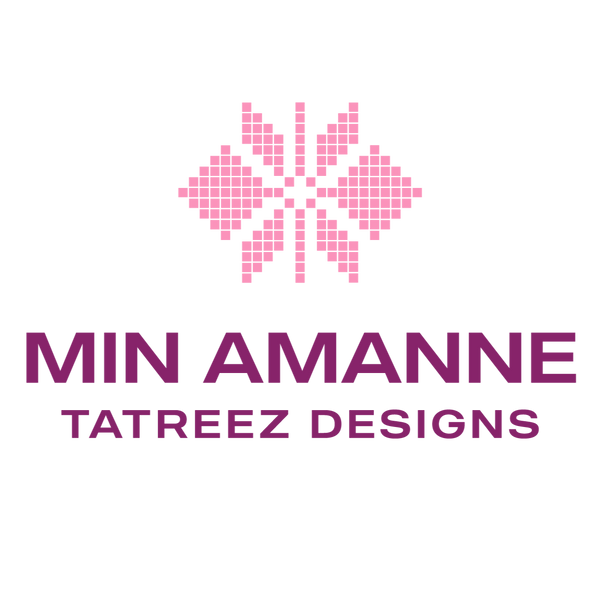
What is Palestinian Tatreez?
Share
Tatreez, the Arabic word for embroidery, is a centuries-old Palestinian art form, passed down from mother to daughter as an essential part of cultural identity and storytelling. More than just decoration, Tatreez is a visual language—every motif, stitch, and color carrying meaning. It reflects the land, history, and individuality of the women who stitch it.
Before 1948, Tatreez was deeply woven into the fabric of Palestinian village life and part of Palestinian culture for centuries. Women embroidered their own thobes (traditional dresses), often starting from a young age. The patterns and colors on a thobe were more than artistic expression—they told a woman’s story. Her embroidery revealed her social status, marital status, and even the village or region she came from. Each area in Palestine had distinct motifs and colors. A variety of stitching styles are found within Palestinian Tatreez including the fallahi stitch (cross-stitch) which was the most common, while the tahriri stitch (couching) was a hallmark of Bethlehem dresses, and the manajel stitch was both decorative and functional, binding fabrics together. Red geometric patterns were characteristic of Ramallah, while Gaza’s embroidery favored bold, vibrant colors.
However, in 1948, everything changed. With the Nakba—the mass displacement of Palestinians—Tatreez, like so much of Palestinian culture, was disrupted. Many women could no longer stitch as before, their lives upended by exile. Yet, instead of fading away, Tatreez became something even more powerful: a shared symbol of Palestinian heritage. Across refugee camps and scattered communities, it evolved into a thread that connected displaced Palestinians, preserving their history and identity against all odds.
For Palestinians around the world, Tatreez represents more than just art—it is a tangible connection to home. In Palestine, artisans and designers work to keep traditional embroidery alive, integrating it into modern clothing, accessories, and art. Despite economic hardships and restrictions on movement, Tatreez workshops provide jobs and preserve cultural knowledge.
In the diaspora, Tatreez has become a way for Palestinians to reconnect with their roots. Many Palestinians are learning to stitch as a way to reclaim their heritage, even if they have never set foot in Palestine. Tatreez continues to evolve as Palestinian identity evolves.
Tatreez is not just embroidery. It is our story and an unbreakable link to Palestine.
